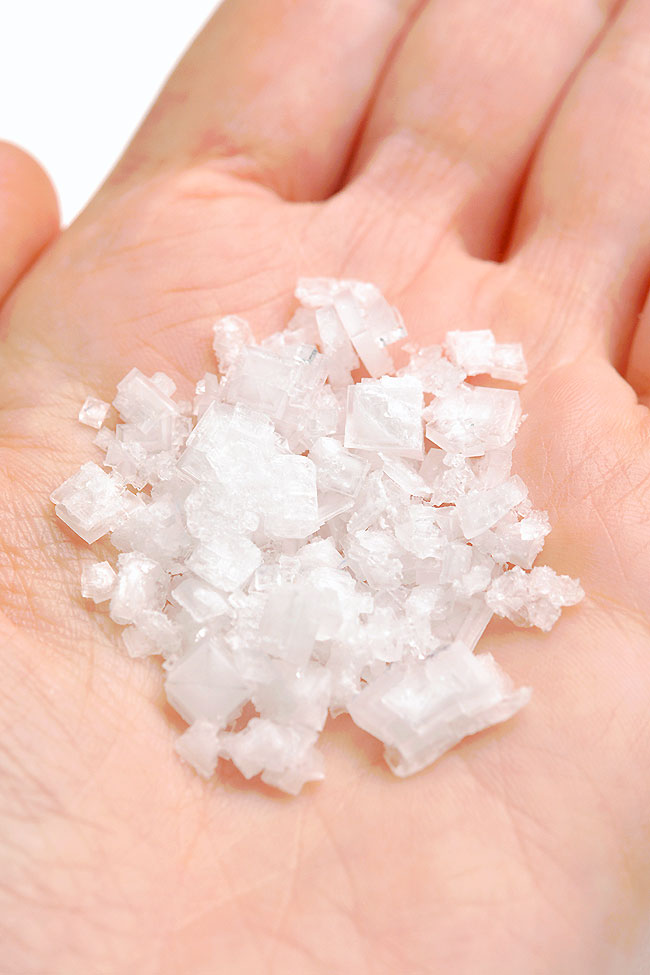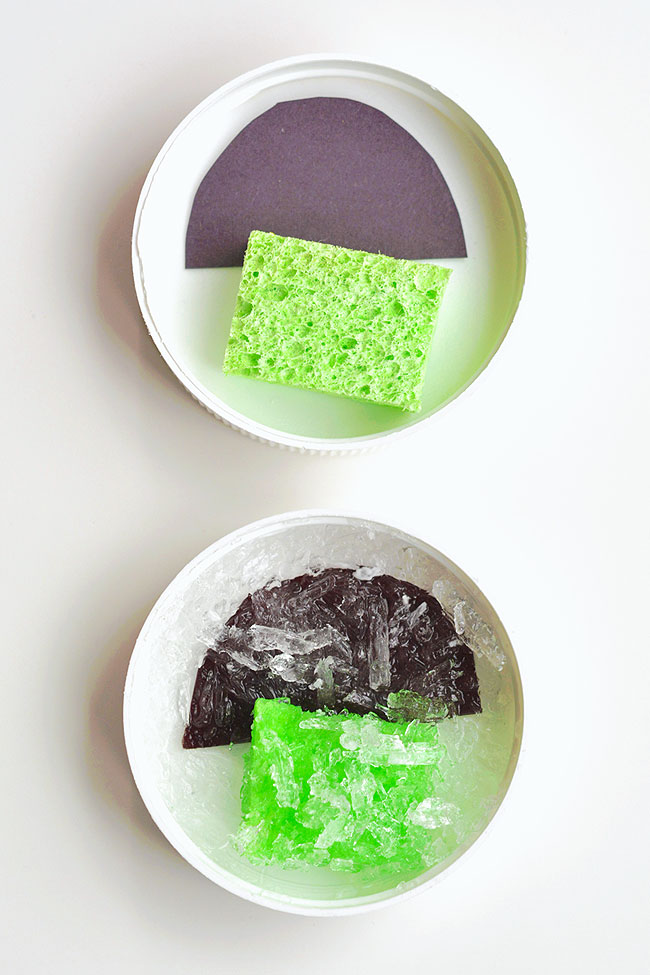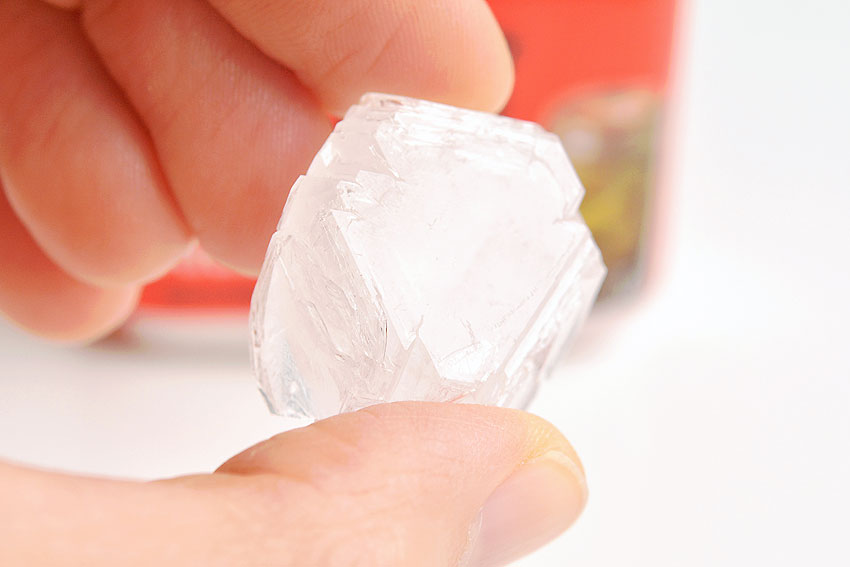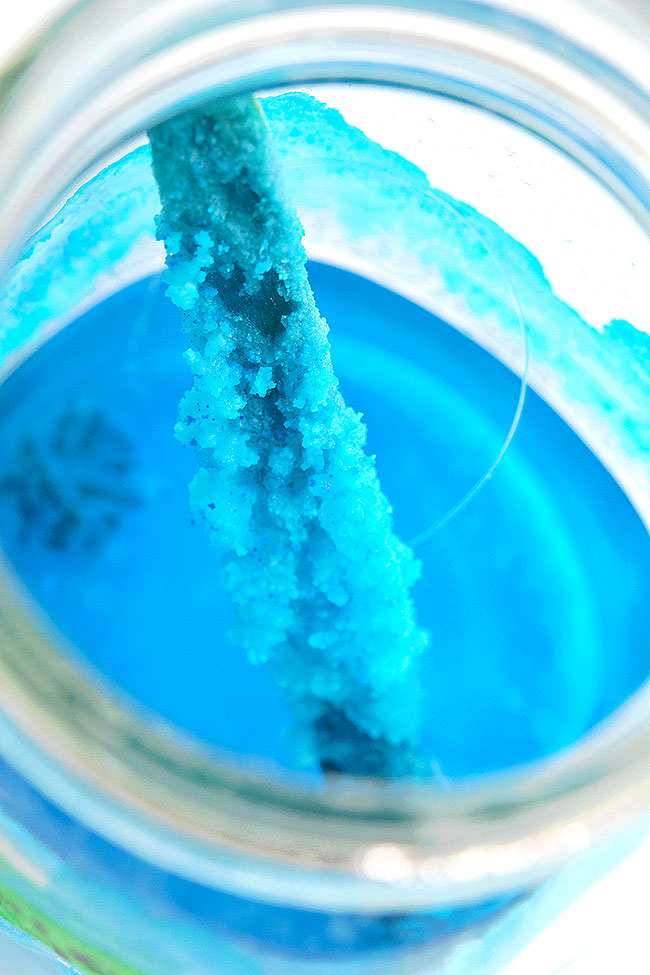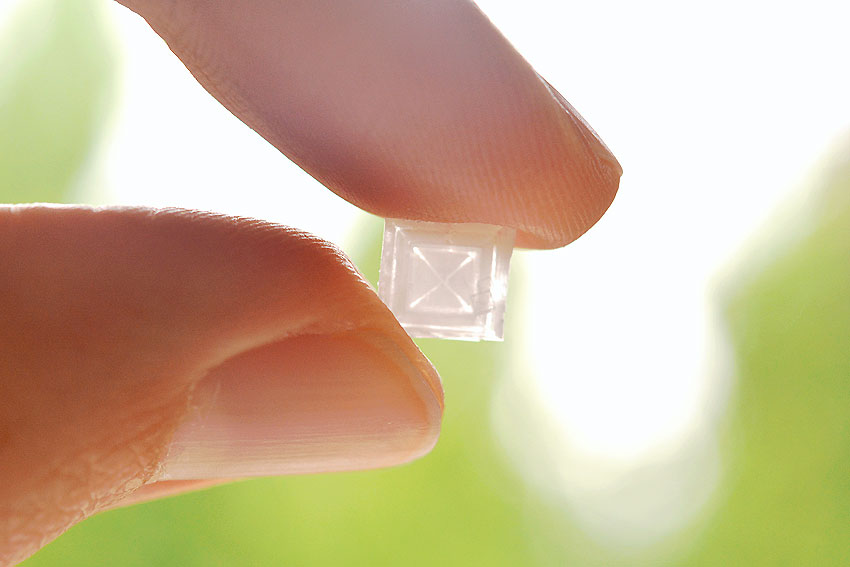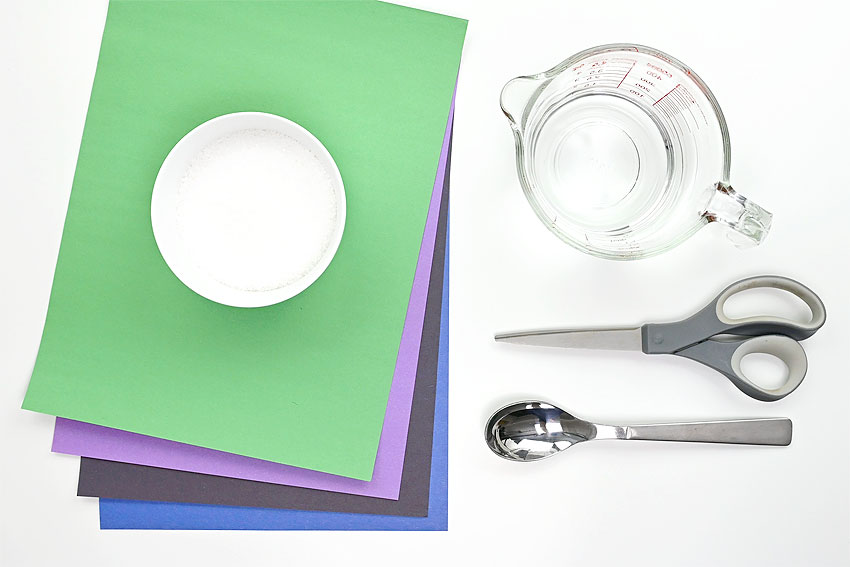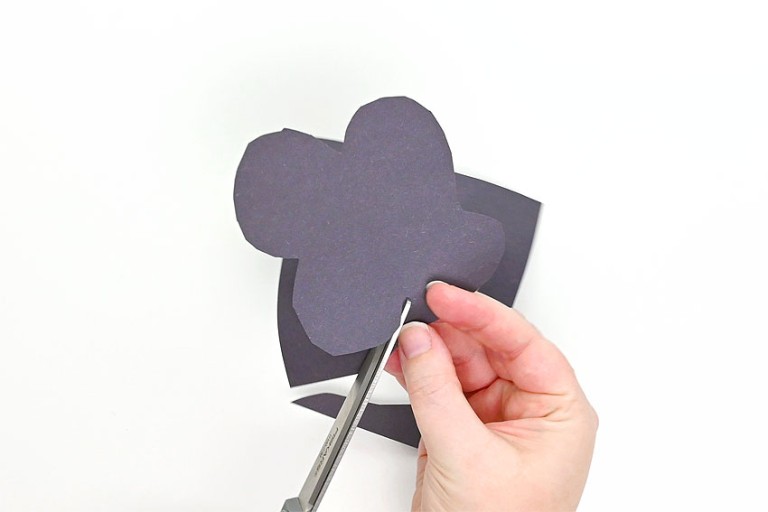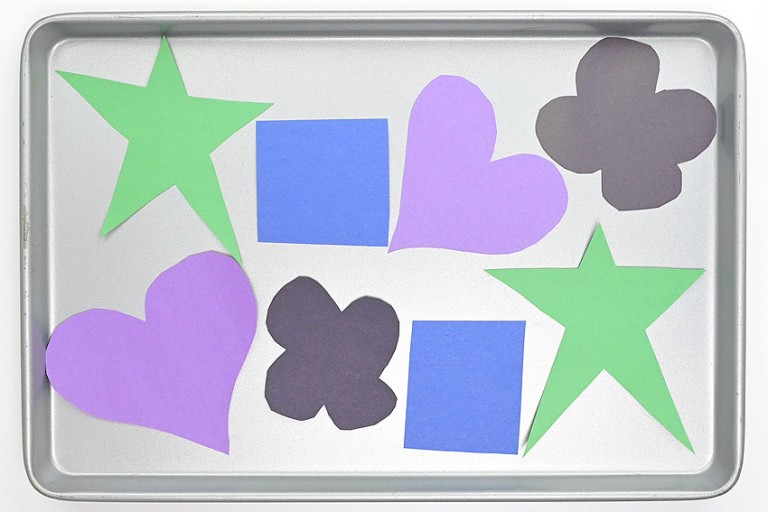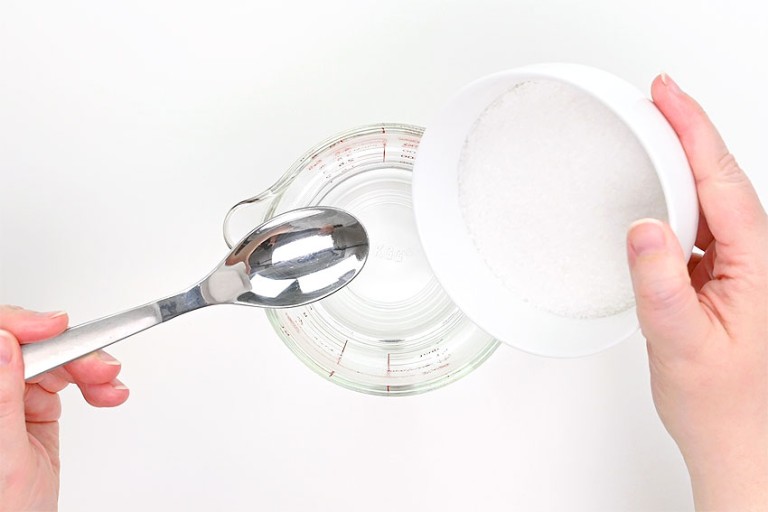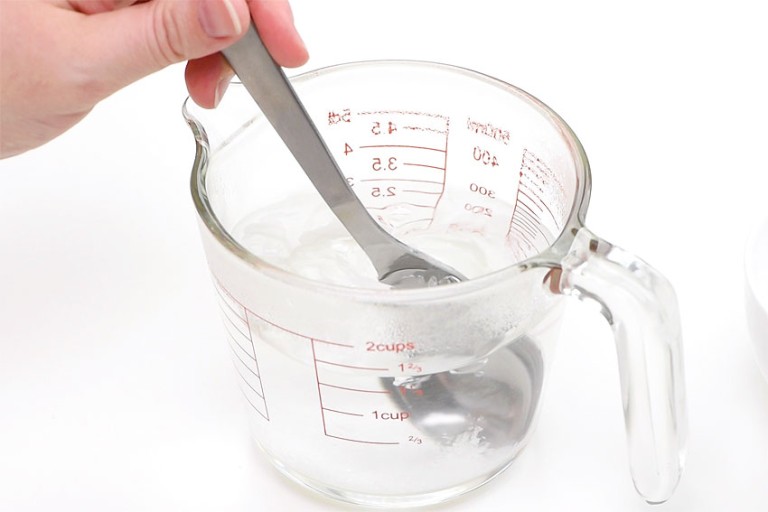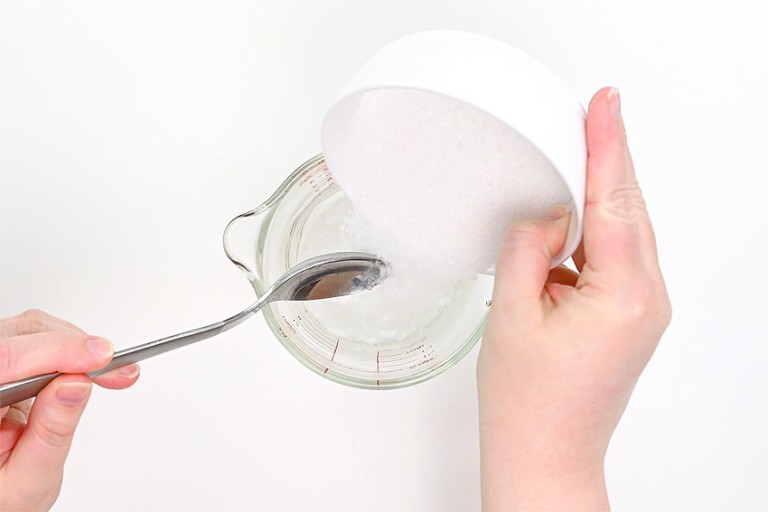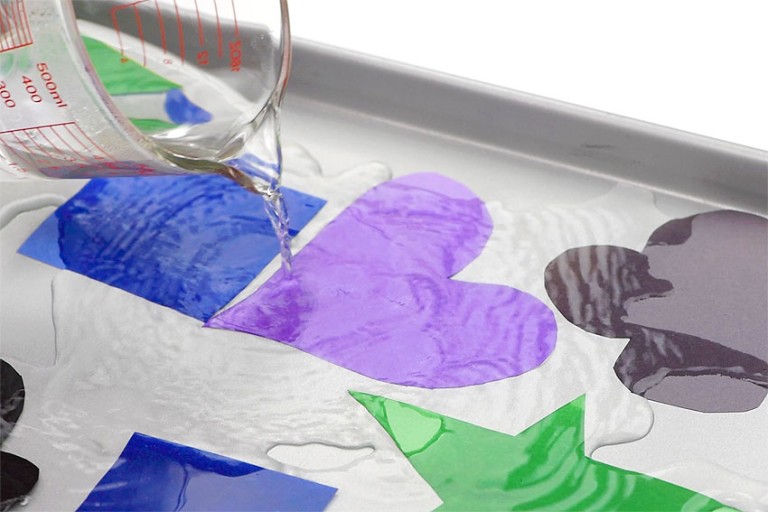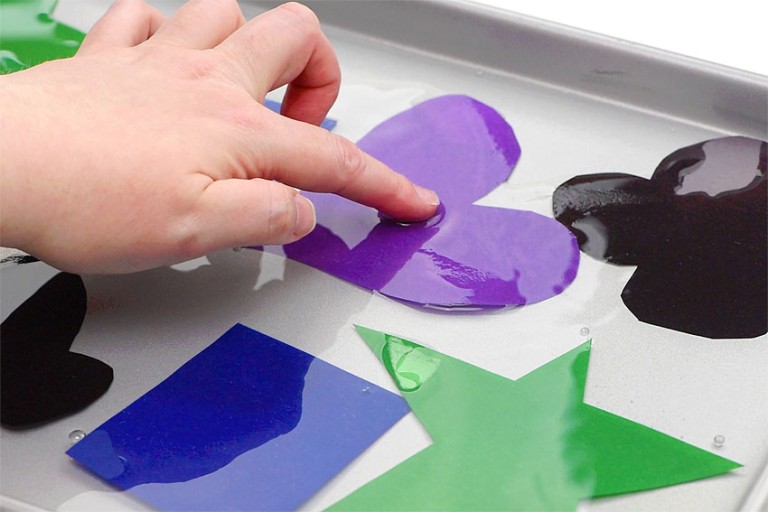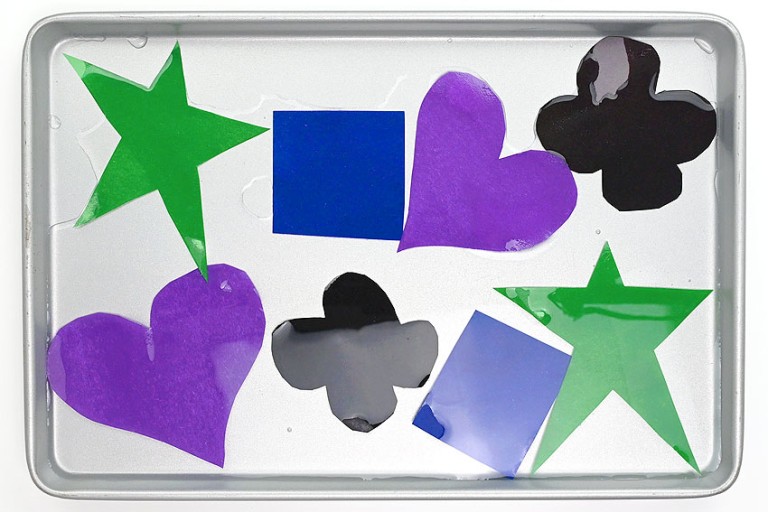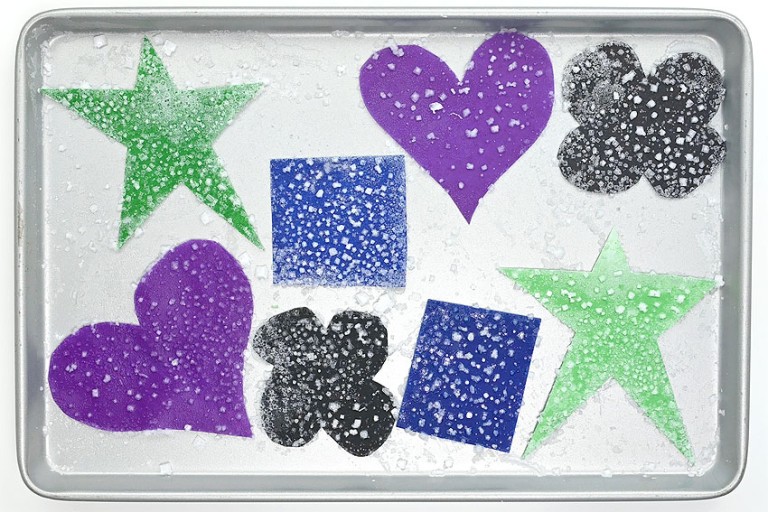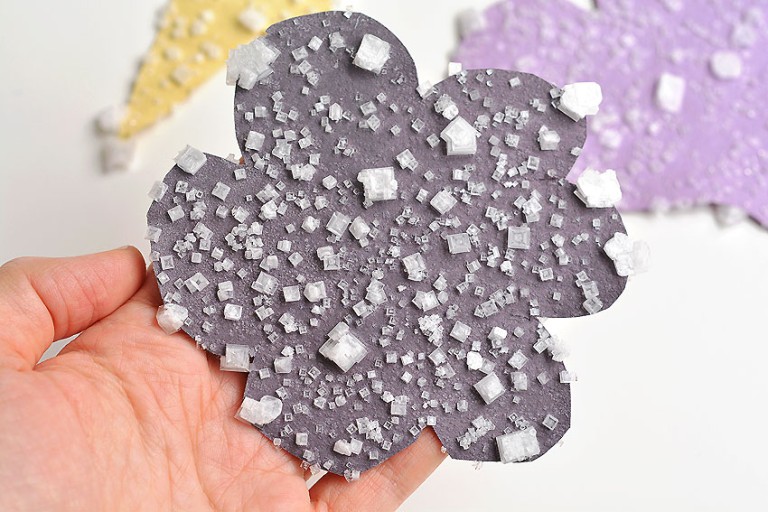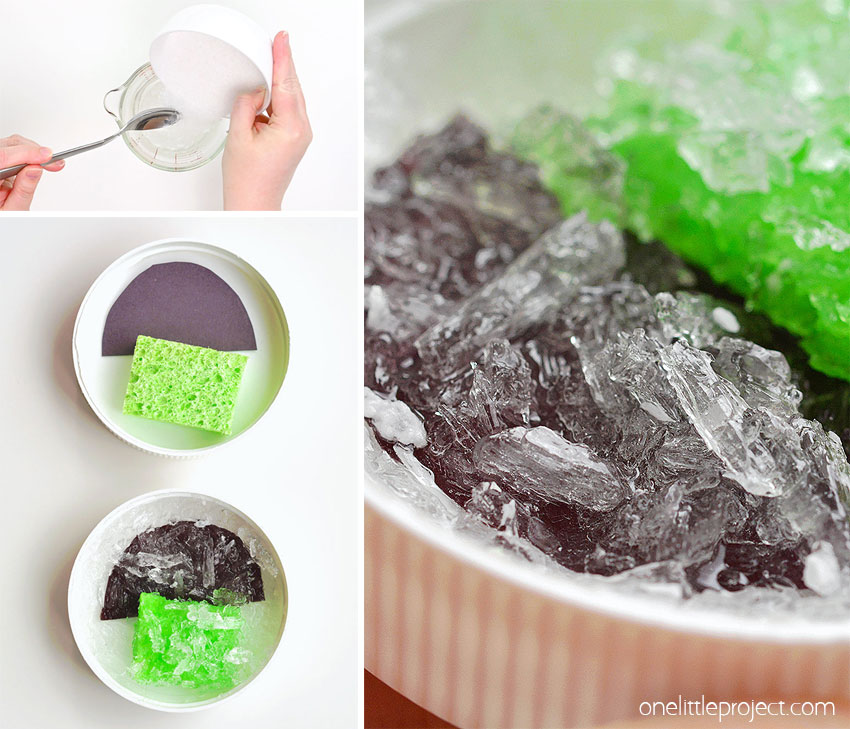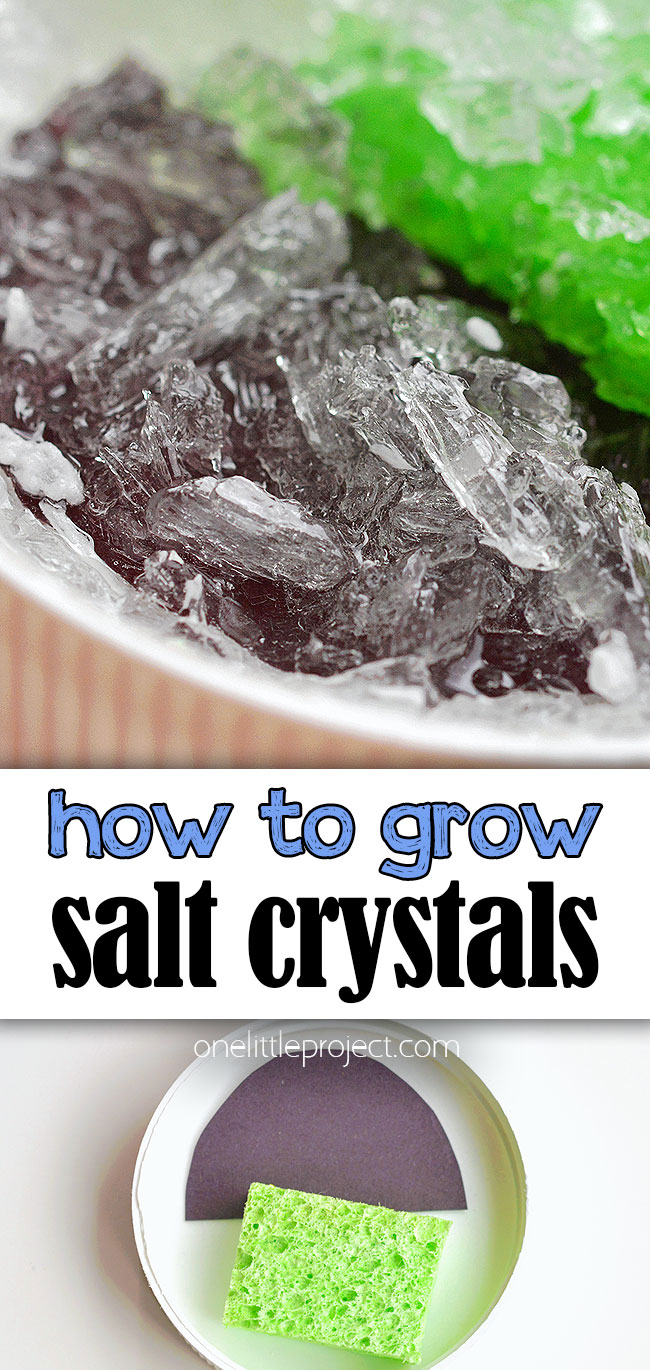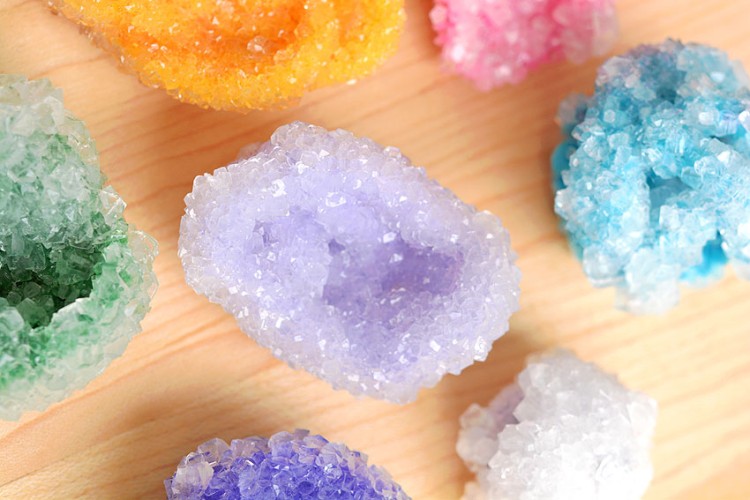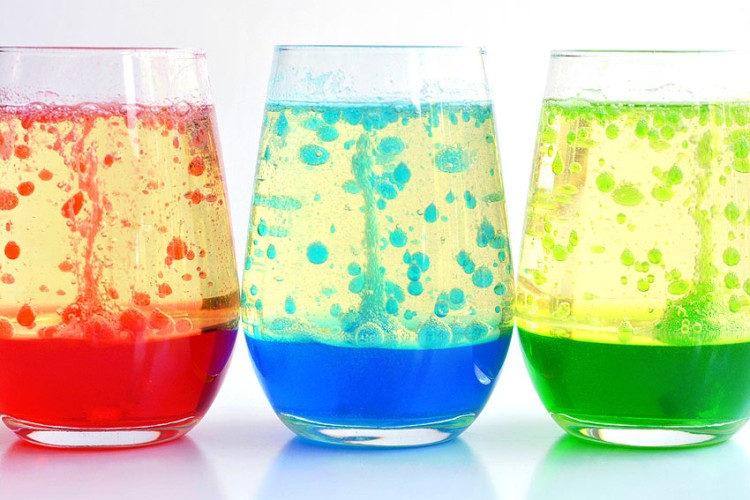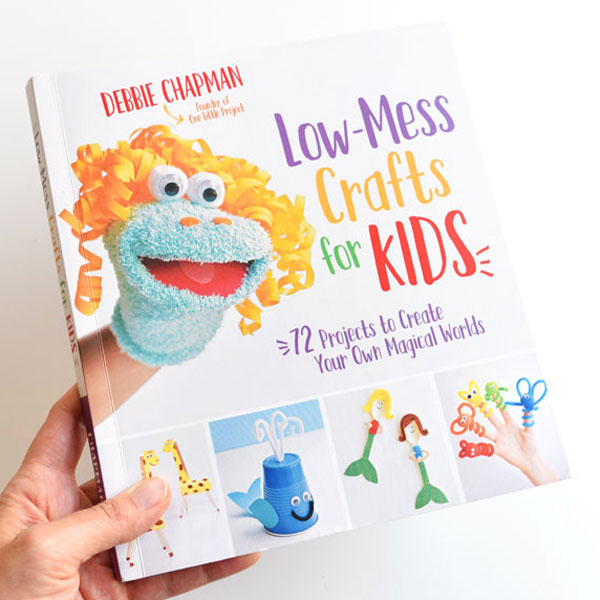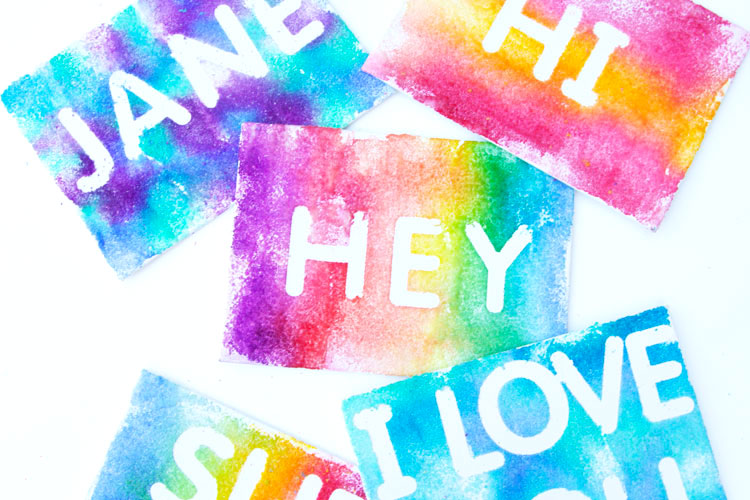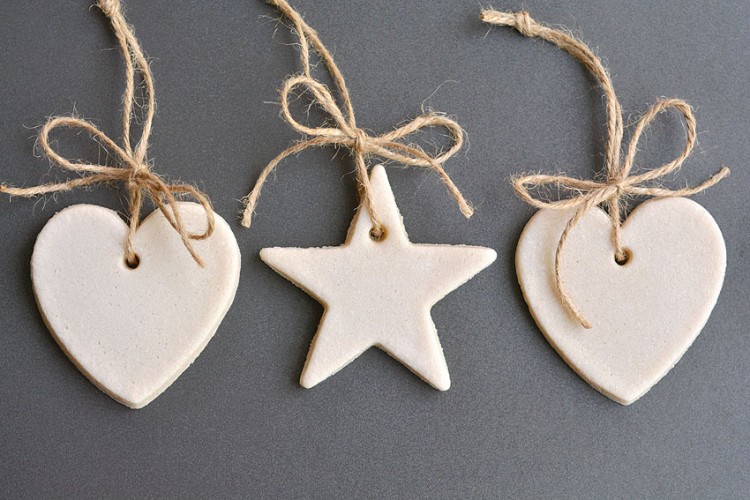How do salt crystals form?
Salt crystals form out of a “supersaturated solution”. A supersaturated solution is a solution (or mixture) that contains more solute (salt, in this case) than is capable of being dissolved in the solvent (water). The water molecules speed up as they are heated, creating space between them for more salt to be absorbed than usual. As the water cools and evaporates, the salt comes out of the solution and forms crystals in a process known as “recrystallization”.
Epsom Salt Crystals
Crystals made from epsom salts are long, spiky, and look like really cool shards of glass! Epsom salt is a naturally occurring mineral salt, used mostly to soothe sore muscles. It’s also an ingredient in bath bombs! We made epsom salt crystals in plastic mason jar lids. You can leave the lid empty, or you can grow your crystals on a cut up a sponge and construction paper like we did.
To make epsom salt crystals: Add 1/3 cup of epsom salt to 1/3 cup of boiling water. Stir well and make sure that no more epsom salt can be dissolved (i.e. if all the salt is dissolved, add more. If there are remaining salt granules, you’ve added enough). Pour the solution into lids or small bowls and place them in areas where they won’t be disturbed. Our epsom crystals started forming after a few days in a sunny window sill. To make larger crystals we poured a new supersaturated solution over the already formed crystals and let them continue growing for around 1 month.
Alum Crystals
We found alum crystals to be the easiest, fastest, and BIGGEST crystals to grow. Alum, or potassium alum, is an aluminum salt that is often used for pickling recipes. You can get it at the grocery store in the spices section.
To make an alum crystal: pour 1 cup of boiling water into a measuring cup and add 1 tablespoon of alum. Keep adding alum until no more can dissolve in the water. Pour this supersaturated solution in a clean mason jar (or glass) and wait overnight. By the next day you should have a big gem-like chunk in the bottom of the mason jar like in the photo above!
Table Salt Crystals
Crystals made from plain table salt were the least successful for us. Apparently the iodine in table salt can prevent the crystals from growing properly. The crystals you can see in the photo below on the popsicle stick were a bit of a happy accident. We were trying to grow salt crystals on a pipe cleaner (like we did for our borax crystals), but after a week or so nothing had grown.
The popsicle stick fell in the coloured water and we just left it there as we worked on making other types of salt crystals. The photo above was taken after the jar had been sitting for about a month. To make table salt crystals: add 1/3 cup of salt to 1 cup of boiling water. Pour into a mason jar and stir in 5 – 10 drops of food colouring. Place a popsicle stick in the solution and let it sit for at least 2 to 3 weeks.
Sea Salt Crystals
If you’re using sea salt to grow crystals, make sure your sea salt doesn’t have any added iodine. These crystals were easy to make, but a bit inconsistent – one time we got large crystals (seen in the picture below), and other times they were smaller. Room temperature and humidity definitely affect how these crystals grow. We found these crystals really cool – especially the X’s that grew on them – and we liked that they grew in just a couple of days. See below for the full photo tutorial and video for how to make crystals from sea salt.
Why do salt crystals form with an “X”?
We found it really fascinating that the crystals made from sea salt form in a square shape, and that on most of them you could see an “x” in the center! Sea salt does contain additional minerals, but it is mostly made up of sodium chloride (NaCl). Sodium chloride crystals form in perfect cubes in a controlled environment. But in regular conditions the edges of the cube grow faster than the faces and form an inverted pyramid shape. That’s what the “x” is that you can see on the crystals.
Check out our Salt Crystals video tutorial:
*Note: Scroll down for the step-by-step photo tutorial. Looking for more fun experiments? Here’s some of our favourites: How to Grow Borax Crystals Borax Crystal Star Ornaments How to Make a Lava Lamp
Non-iodized sea salt Boiling (or very hot) water Spoon Construction paper Scissors Cookie sheet/baking tray
Salt crystals are fascinating to make! It’s so interesting how the chemical composition of different salts forms different shapes of crystals! What type of crystal is your favourite? Try mixing and matching the methods and writing down predictions over which salt crystal will grow fastest and which will grow largest.
Here’s even more science experiment ideas:
Our book Low-Mess Crafts for Kids is loaded with 72 fun and simple craft ideas for kids! The projects are fun, easy and most importantly low-mess, so the clean up is simple!
Where to buy:

